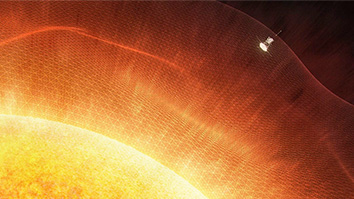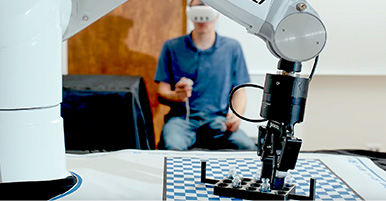Citation
Ereso, A. Q., Garcia, P., Tseng, E., Dua, M. M., Victorino, G. P., & Guy, L. T. S. (2009). Usability of robotic platforms for remote surgical teleproctoring. Telemedicine and e-HEALTH, 15(5), 445-453.
Abstract
Three proctoring platforms for remote surgery were evaluated to determine which would be most appropriate. The systems were a 6-degree-of-freedom (DOF) device, a computer mouse controlling a pan-tilt-zoom (PTZ) camera, and a computer pen/tablet controlling the PTZ. Five surgeons used each platform to perform qualitative and quantitative evaluation, recording their findings on 5-point scale. The mouse and pen/tablet had higher performance scores than the 6-DOF device. The mouse or pen/tablet platforms would be much better tools for subspecialists to proctor a remotely located surgeon.
Military field hospitals and rural medical centers may lack surgical subspecialists. Robotic technology can enable proctoring of remotely located general surgeons by subspecialists. Our objective compared three proctoring platforms: (1) 6-degree-of-freedom (DOF) computer input devices controlling a camera and laser pointer mounted on robotic arms, (2) a computer mouse controlling a pan-tilt-zoom (PTZ) camera and robotic laser scanner, and (3) a computer pen/tablet controlling a PTZ-camera and robotic laser scanner. Our hypothesis was that a pen/tablet or mouse platform would be superior to the 6-DOF-input device platform. Five surgeons used each platform by simulating the creation of operative incisions. Qualitative (instrument handling, time, motion, spatial awareness) and quantitative performance (accuracy, speed) was assessed on a five-point scale. Each surgeon completed a satisfaction survey. Both mouse and pen/tablet had higher mean performance scores than the 6-DOF-input device in all quantitative (6-DOF = 1.7 ± 0.8, mouse = 4.3 ± 0.2, pen = 4.1 ± 0.6; p < 0.001) and qualitative measures (6-DOF = 1.7 ± 0.2, mouse = 4.8 ± 0.0, pen = 4.6 ± 0.1; p < 0.001). Handling, motion, and instrument awareness were superior with the mouse and pen/tablet versus 6-DOF-input devices (p < 0.0001). Speed and accuracy were also superior using the mouse or pen/tablet versus 6-DOF-input devices (p < 0.0001). Surgeons completed tasks faster using the mouse versus pen/tablet (p = 0.02). Satisfaction surveys revealed a preference for the mouse. This study demonstrates the superiority of a mouse or pen/tablet controlling a PTZ-camera and robotic laser scanner for remote surgical teleproctoring versus 6-DOF-input devices controlling a camera and laser pointer. Either a mouse or pen/tablet platform allows subspecialists to proctor remotely located surgeons.


